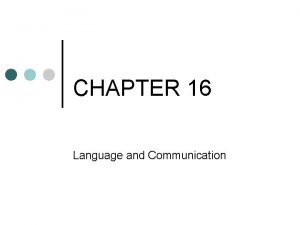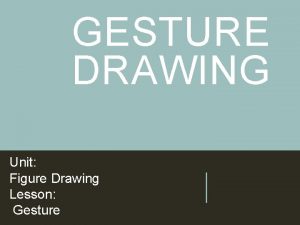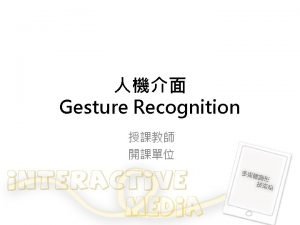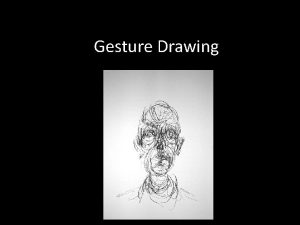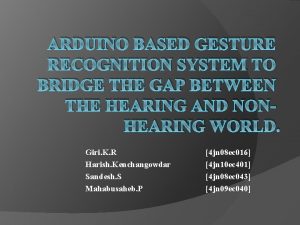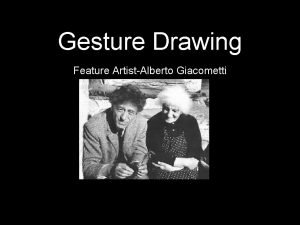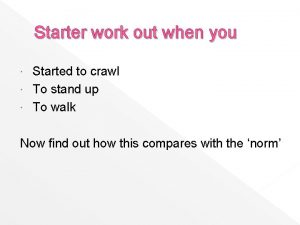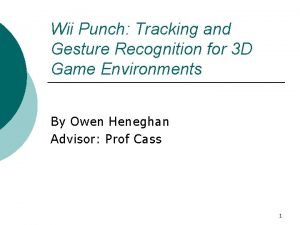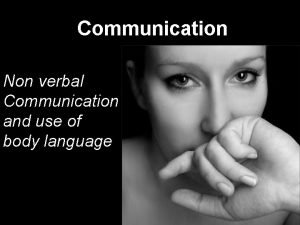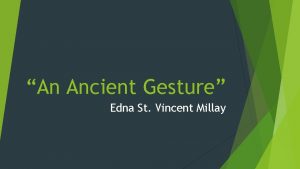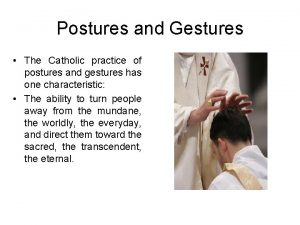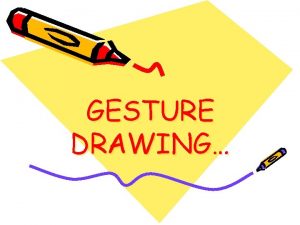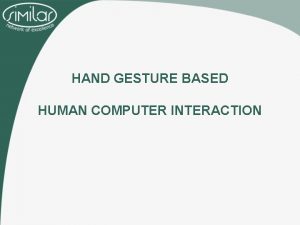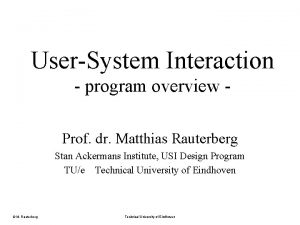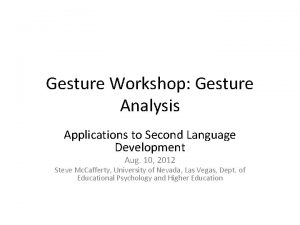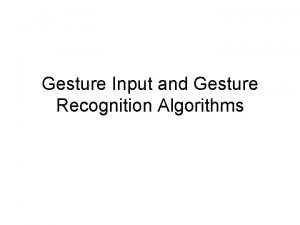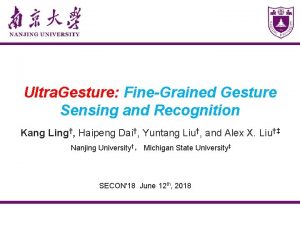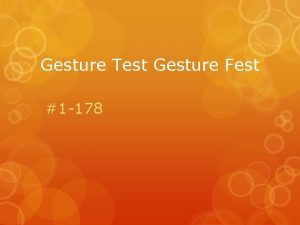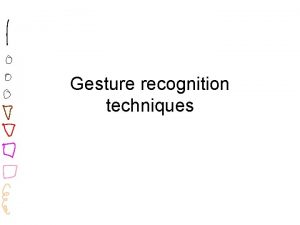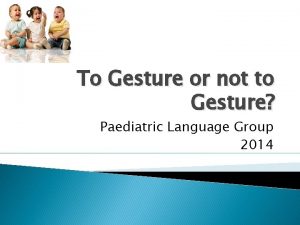UserSystem Interaction from gesture to action Prof dr













- Slides: 13

User-System Interaction: from gesture to action Prof. dr. Matthias Rauterberg IPO - Center for User-System Interaction TU/e Eindhoven University of Technology © M. Rauterberg, TU/e

The optimization problem costs user system optimum © M. Rauterberg, TU/e technical complexity of the user interface

What are the research topics of USI? • Communication / Co-operation • Home / Office Environment • Financial / Medical Sector • Knowledge Management • Product / Process Industry • Transportation / Logistic • Teaching and Learning Working domain Working system Goal: user Science • perception • cognition • action © M. Rauterberg, TU/e interactive system Application • user-centered design Engineering • audio interfaces • computer vision based input • speech input / output • tactile input / output Pa => Pd

Two Trends in User Interface Technology Ubiquitous and Mobile computing © M. Rauterberg, TU/e Ambient rooms and Cooperative buildings

What are the technical challenges? • New interaction styles – speech input/output – computer vision based input (e. g. , gestures) – audio interfaces (e. g. , non-speech audio) – tactile and force feedback • New interface concepts – adaptive and intelligent software – natural user interfaces © M. Rauterberg, TU/e

Human-human communication interpersonal relation Non-verbal facial expression © M. Rauterberg, TU/e verbal body movement gesture content action explicit emotion implicit emotion

Non-facial gestures associated with speech act • Iconic gestures – form of this gesture supports a feature of the described action or event (e. g. , “he climbed up the pipe…”) • Metaphoric gestures – form of this gesture is representational (e. g. , “the meeting went on and on…”) • Deictic gestures – form of this gesture specializes or locates something in the physical space nearby the narrator (e. g. , “this document shows…”) • Beat gestures – small baton-like gestures that serve a pragmatic function (e. g. , “she talked first, I mean second…”) © M. Rauterberg, TU/e

What is the research approach? Design relevant knowledge Empirical evaluation © M. Rauterberg, TU/e

The most important design principle • Perception Space – The physical space where the user’s attention is. • Action Space – The physical space where the user acts in. • Design Principle: – perception space and action space must coincide! © M. Rauterberg, TU/e

Two design principles for natural user interfaces (NUIs): 1. design principle No technical equipment inside to body space of the user! 2. design principle Perception space and action space must coincide! © M. Rauterberg, TU/e

© M. Rauterberg, TU/e

BUILD-IT: a tool for integrative design • design team with experts from different disciplines • integration of different expertise • intuitive interaction style • an example for a natural user interface © M. Rauterberg, TU/e

How to meet the challenges? Co-operation inside TUE Research in perception, cognition, and action Research in speech and computer graphics Research in signal processing and pattern recognition © M. Rauterberg, TU/e Co-operation outside TUE
 Gesture-call system
Gesture-call system Gesture figure drawing
Gesture figure drawing Meaningful gesture
Meaningful gesture Gesture drawing definition
Gesture drawing definition Catholic hand gesture
Catholic hand gesture Hand gesture recognition project using arduino
Hand gesture recognition project using arduino Gesture drawing exercises
Gesture drawing exercises Alberto giacometti gesture drawings
Alberto giacometti gesture drawings Cubicle crawl meaning
Cubicle crawl meaning Hand gesture punch game
Hand gesture punch game Communication in general is process
Communication in general is process An ancient gesture poem
An ancient gesture poem Catholic gestures
Catholic gestures Gesture definition
Gesture definition
